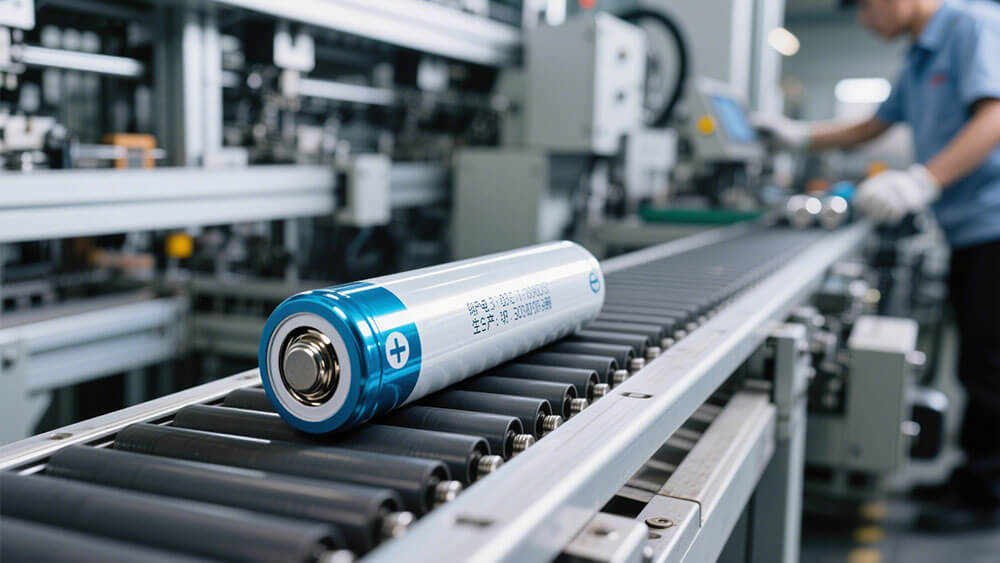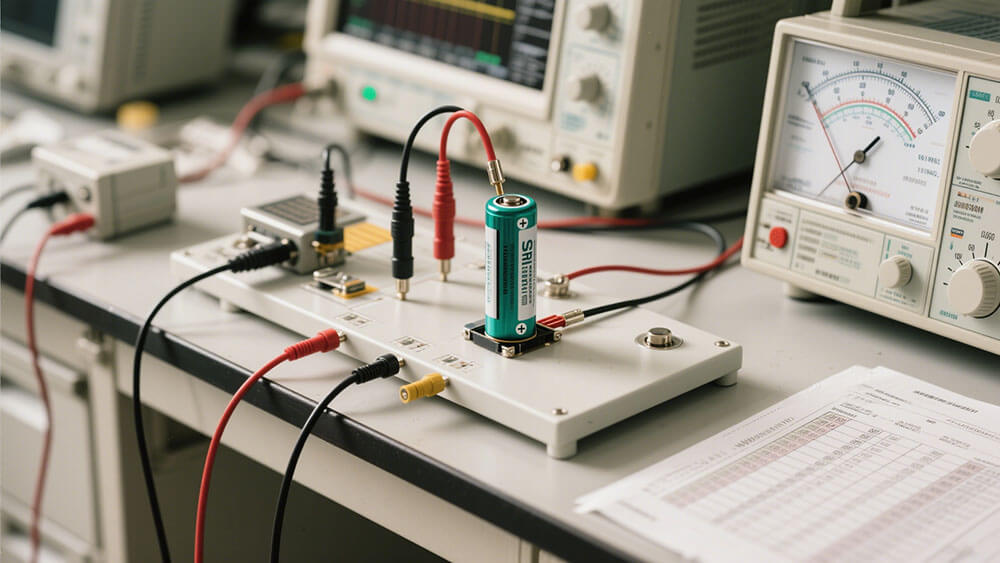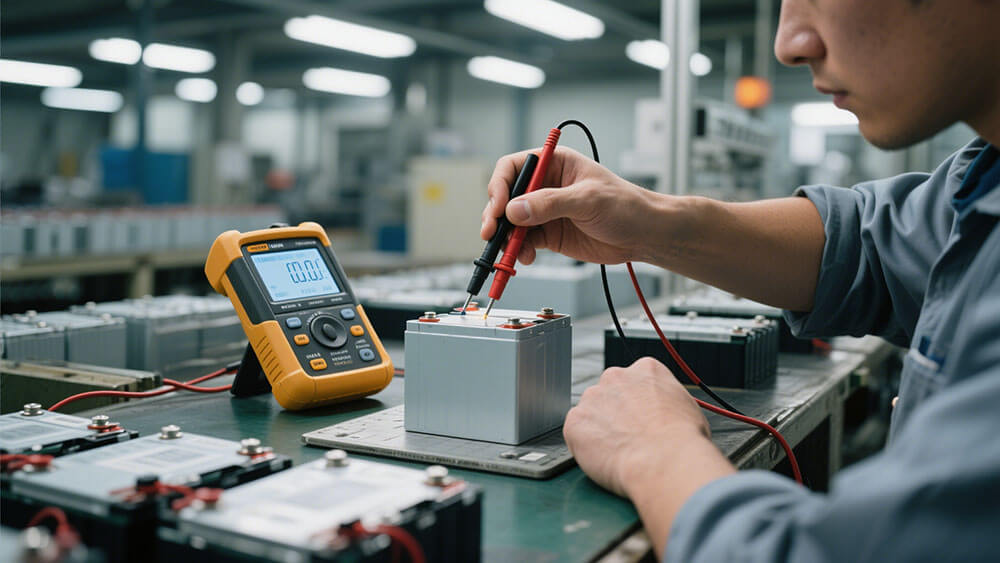Contents

The 3.6V nominal voltage of lithium battery cells is crucial in determining their average performance during discharge. This specific voltage streamlines the selection process for engineers and guarantees compatibility across various devices. For instance, a single lithium battery with a capacity of 3,200mAh at 3.6V nominal voltage provides 11.5Wh of energy. Engineers rely on this value to create dependable systems while mitigating risks such as overvoltage. In applications like electric vehicles, the 3.6V nominal voltage of lithium battery cells is vital for maintaining consistent battery performance and ensuring operational efficiency.
Key Takeaways
The 3.6V nominal voltage is important for lithium batteries. It keeps performance steady and works well with many devices.
Knowing nominal voltage helps pick the right battery. It improves energy use and keeps things safer.
A steady nominal voltage lowers the chance of voltage problems. This is key for safe use in medical tools and robots.

Part 1: What is the 3.6V Nominal Voltage of Lithium Battery Cells?
1.1 Defining Nominal Voltage in Lithium-ion Batteries
Nominal voltage represents the average operating voltage of a battery during its discharge cycle. For lithium-ion batteries, this value typically falls around 3.6V or 3.7V, depending on the specific chemistry used. You can think of nominal voltage as a benchmark that helps engineers and designers predict how a battery will perform under normal conditions.
Several factors influence the nominal voltage of lithium-ion batteries:
Battery Chemistry: The chemical composition of lithium-ion cells determines their voltage range. For example, NMC Lithium batteries, widely used in consumer electronics and electric vehicles, have a nominal voltage of 3.6V due to their nickel-cobalt-manganese composition.
Voltage Range: Lithium-ion batteries operate between a peak voltage of 4.2V and a cut-off voltage of 2.5V. The nominal voltage is calculated as the average of these values during discharge.
Measurement Method: To measure nominal voltage, you can use a multimeter by connecting its probes to the battery terminals while ensuring the battery is at rest without any load.
Understanding nominal voltage is crucial for optimizing battery performance in applications like medical devices, robotics, and security systems. For instance, in medical equipment, consistent voltage ensures reliable operation, which is critical for patient safety.
1.2 Why Lithium-ion Batteries Have a Nominal Voltage of 3.6V
The 3.6V nominal voltage of lithium-ion batteries is a result of their chemical design and engineering optimization. Ternary lithium batteries, such as NMC Lithium batteries, are specifically designed to operate within a voltage range of 2.5V to 4.2V. This range supports higher energy density and efficient performance, making them ideal for industries like robotics and infrastructure.
Key reasons for the 3.6V nominal voltage include:
Energy Density: NMC Lithium batteries offer an energy density of 160–270Wh/kg, which is optimized for applications requiring compact and lightweight power sources, such as consumer electronics and industrial equipment.
Voltage Stability: The 3.6V nominal voltage ensures stable operation across various devices, reducing the risk of overvoltage or undervoltage conditions. This stability is particularly important in security systems, where uninterrupted power is essential.
Compatibility: Many devices are designed to operate with lithium-ion battery voltage ranges, making the 3.6V nominal voltage a standard for compatibility across industries.
For example, in infrastructure applications like transportation systems, lithium-ion batteries with a nominal voltage of 3.6V provide reliable power for electric buses and trains.
By understanding the significance of the 3.6V nominal voltage, you can make informed decisions when selecting batteries for your projects, ensuring optimal performance and safety.

Part 2: Why Lithium Battery Nominal Voltage Matters
2.1 Impact on Battery Performance and Energy Capacity
The nominal voltage of a lithium-ion battery plays a pivotal role in determining its overall performance and energy capacity. This voltage acts as a reference point for calculating the energy output of a battery during its discharge cycle. For instance, a lithium-ion battery with a nominal voltage of 3.6V and a capacity of 3,000mAh delivers approximately 10.8Wh of energy. This calculation is essential for applications requiring precise energy management, such as medical devices and robotics.
The relationship between battery capacity and nominal voltage directly influences battery efficiency. A higher nominal voltage allows for greater energy density, enabling devices to operate longer without increasing battery size. This is particularly beneficial in consumer electronics, where compact designs are critical. Additionally, the nominal voltage ensures consistent performance during charging and discharging cycles, minimizing energy losses and enhancing battery lifespan.
In practical applications of nominal voltage, industries like infrastructure and industrial automation rely on stable voltage levels to maintain operational efficiency. For example, electric buses and trains equipped with lithium-ion batteries depend on the 3.6V nominal voltage to deliver reliable power over extended periods. This stability reduces downtime and ensures uninterrupted service.
2.2 Importance for Device and System Compatibility
The nominal voltage of lithium-ion batteries ensures seamless integration with a wide range of devices and systems. Most electronic devices are designed to operate within specific voltage ranges, making the 3.6V nominal voltage a standard for compatibility. This standardization simplifies the design process for manufacturers and reduces the risk of voltage mismatches that could damage devices.
In robotics, for example, the consistent voltage output of lithium-ion batteries ensures smooth operation of motors and sensors. This reliability is crucial for tasks requiring precision, such as automated assembly lines or medical robots. Similarly, in security systems, stable voltage levels prevent disruptions in surveillance equipment, ensuring continuous monitoring and protection.
Moreover, the nominal voltage facilitates efficient voltage management in battery packs. By maintaining uniform voltage levels across all cells, manufacturers can optimize battery performance and extend battery lifespan. This uniformity also simplifies the integration of battery management systems (BMS), which monitor and regulate voltage to prevent overcharging or deep discharging.
2.3 Role in Battery Pack Safety and Reliability
Safety and reliability are paramount in lithium-ion battery applications, and the nominal voltage plays a critical role in achieving both. Manufacturers implement multiple layers of protection to enhance safety, including limiting active material and incorporating safety mechanisms within the cell. These measures prevent high current surges and manage internal pressure, reducing the risk of thermal runaway.
High voltage increases the risk of thermal runaway, a significant safety concern that can lead to battery failure or fire. By adhering to the maximum safe voltage and minimum safe voltage limits, lithium-ion batteries maintain operational safety. This is particularly important in industrial applications, where battery failures could result in costly downtime or equipment damage.

Part 3: How the 3.6V Nominal Voltage is Determined
3.1 Lithium-ion Chemistry and Voltage Ranges
The nominal voltage of lithium-ion batteries, typically around 3.6V, stems from their unique chemistry and voltage characteristics. This value represents the average operating voltage during discharging, making it a critical parameter for battery performance.
The nominal voltage of lithium-ion cells generally ranges between 3.6V and 3.7V.
Variations in nominal voltage arise from differences in battery chemistries. For instance, NMC Lithium batteries exhibit higher nominal voltages compared to LTO Lithium batteries, which have the lowest.
The 3.6V nominal voltage serves as a standard reference for most applications, ensuring compatibility across devices.
This voltage range supports the high energy density and efficiency required in industries like robotics, where precise power delivery is essential for motor and sensor operations.
3.2 Differences Between Nominal, Peak, and Cut-off Voltage
Understanding the distinctions between nominal, peak, and cut-off voltage is vital for optimizing battery performance and safety. The table below highlights these differences:
Voltage Type | Value | Notes |
|---|---|---|
Nominal Voltage | 3.6V, 3.7V, 3.8V, 3.85V | Represents the average operating voltage during discharging. |
Peak Voltage | 4.2V, 4.35V, 4.4V | Maximum voltage during charging, varies based on battery design. |
Cut-off Voltage | 2.8–3.0V | Minimum voltage for safe operation, critical for extending battery life. |
For example, in medical devices, maintaining the correct cut-off voltage prevents over-discharging, which could compromise patient safety.
3.3 Design Considerations for Battery Nominal Voltage
Designing a battery with a nominal voltage of 3.6V involves balancing chemistry, application requirements, and safety. Lithium-ion batteries, for instance, achieve this consistency by operating within a voltage range of 2.5V to 4.2V. This ensures they meet the power demands of various industries, from consumer electronics to industrial automation.
Battery Chemistry | Nominal Voltage |
|---|---|
NiCad | 1.2 volts |
NiMH | 1.4 volts |
Lithium-ion | 3.6 volts |
Lead-acid | 2 volts |
The nominal voltage of different lithium batteries varies based on their chemistry. For example, NMC Lithium batteries offer a platform voltage of 3.6–3.7V, while LiFePO4 Lithium batteries operate at 3.2V. These differences influence energy density and cycle life, making it essential to select the right chemistry for your application.
When designing battery packs, you must also consider factors affecting battery nominal voltage, such as temperature, load conditions, and charging protocols. These factors ensure the battery delivers consistent performance while maintaining safety. For custom battery solutions tailored to your needs, consult Large Power.
The 3.6V nominal voltage of lithium battery cells plays a vital role in their design and application. You can use this knowledge to optimize battery performance, ensure compatibility with devices, and maintain safety standards. This understanding is especially critical for creating efficient and reliable battery packs for industrial and commercial purposes.
FAQ
1. What does nominal voltage mean in a lithium battery?
Nominal voltage refers to the average voltage a lithium battery provides during discharge. It helps you predict performance and compatibility with devices.
2. Why is 3.6V the standard nominal voltage for lithium batteries?
The 3.6V nominal voltage results from lithium-ion chemistry. It balances energy density, stability, and compatibility, making it ideal for most applications.
3. How does nominal voltage affect battery safety?
Nominal voltage ensures safe operation by preventing overvoltage or undervoltage. It also helps battery management systems maintain stability and avoid thermal runaway risks.
Tip: For professional guidance on battery safety, visit Large Power.





